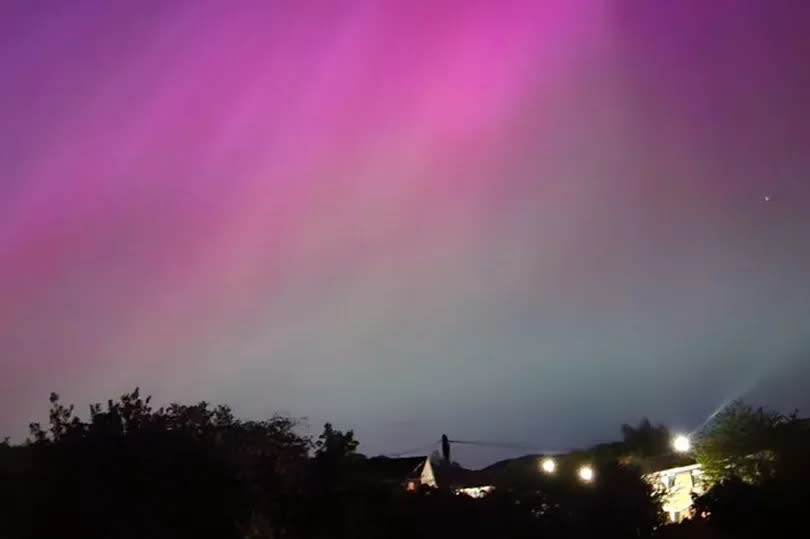New Northern Lights alert for Scotland - how to track and get phone notifications

After the UK was treated to a spectacular display of the Northern Lights on Friday, many were left disappointed on Saturday.
Edinburgh locals gathered in areas such as Calton Hill, to be away from as much light pollution as possible in an attempt to see the aurora borealis on Saturday, May 11. However, due to cloudy conditions, they weren't visible and stargazers walked away disappointed.
But weather experts have said that there is still a chance they may appear on Sunday. Third time lucky perhaps?
READ NEXT-Edinburgh weather: Exact time thunderstorms set batter city amid yellow warning
READ NEXT-Tragedy as Edinburgh man pronounced dead as emergency services rush to busy street
According to MyLondon, Channel 4 weather presenter Liam Dutton said that another geomagnetic storm erupted which could fill the night sky with eerie green and pink bands of light.
Taking to X, he said: “**LATEST NOAA SPACE PREDICTION** Further coronal mass ejections (CMEs) expected to arrive on Sunday. This means another strong or extreme geomagnetic storm is likely.
“Therefore, there may be another UK-wide showing of the aurora borealis on Sunday night - cloud permitting.”
Liam later added: “Geomagnetic activity will increase again today, however, as with last night, peak activity may not coincide with darkness. There’ll also be much more cloud around tonight, with clear spells limited. So, the chances of spotting the will be reduced somewhat.”
Scientist group AuroraWatch UK issued a yellow alert on Sunday morning (May 12) saying the phenomenon could be visible with the eye in some areas and with camera equipment more widely. This weekend The Northern Lights, also known as aurora borealis, appeared after the Met Office confirmed a rare severe geomagnetic storm warning for this weekend – the first in nearly 20 years.
According to the US National Oceanic and Atmospheric Administration (NOAA), the earth was hit by a G5 geomagnetic storm on Thursday. A G5 rating is considered “extreme” and the strongest level of solar storm. The cause of this storm was a “large, complex” sunspot cluster, 17 times the diameter of Earth.
The last storm with a G5 rating hit Earth more than 20 years ago in October 2003 and caused power outages in Sweden. Every 11 years, the sun’s poles reverse, causing bursts of solar activity resulting in northern lights. Scientists predict the next solar maximum will occur at the end of 2024.
How to get Northern Lights notifications sent to your phone
AuroraWatch UK is a free service offering alerts of when the aurora might be visible from the UK. It is run by scientists in the Space and Planetary Physics group at Lancaster University’s Department of Physics.
You can find it in your phone’s App store called AuroraWatch UK Aurora Alerts. If you download it, you will get a message on your phone when there is activity likely to lead to the Northern Lights. On Saturday a red alert was sent out, which you can see in the picture above.

 Yahoo News
Yahoo News 
